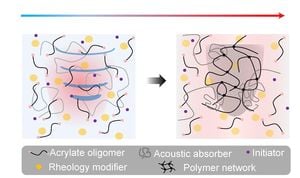A new method significantly enhances laser-driven proton acceleration to over 100 MeV by utilizing conduction-restricted plasma targets, offering promising advancements for medical and imaging applications.
Researchers have successfully achieved proton acceleration exceeding 110 MeV through the irradiation of conduction-restricted nanometre polymer foils using ultrahigh-intensity femtosecond lasers. This groundbreaking enhancement was primarily made possible by overcoming previously encountered limitations related to laser-foil interaction, which allowed for the establishment of strong Coulomb fields via carbon ions within these foil structures.
The research team, affiliated with the Institute for Basic Science and several collaborating institutions, conducted their tests using the CoReLS 4-PW Ti:Sapphire laser at the Center for Relativistic Laser Science (CoReLS). Published on April 16, 2025, their findings hold significant promise for improving the efficacy of laser-accelerated proton sources intended for applications such as proton imaging for diagnostics and flash radiotherapy for cancer treatment.
Historically, researchers have faced challenges achieving proton energies above 100 MeV. The team focused on modifying the traditional approaches by utilizing specially structured polymer foils to hinder electron conduction, enhancing the proton acceleration process by applying high-contrast multi-petawatt femtosecond laser pulses. The novel hybrid mechanism of radiation pressure and Coulomb repulsion effectively pushed protons to record energy levels.
The experimental setup yielded high energy outputs from the protons, particularly highlighted by the use of conduction-restricted foils during the laser interaction. The team noted, "Our achievement paves the road to enhancing proton energy... through a controllable acceleration process using well-designed nano- or micro-structured targets." This precise engineering ensured optimal energy collection and reduced deviations common with previous proton acceleration experiments.
Significantly, the authors emphasized the importance of maintaining high laser temporal and spatial stability to improve the collision interaction with the structured foils. This rigorous approach helped establish strong electric fields within the intervening plasma, leading to greater acceleration effects with negligible loss.
Alongside practical applications, the findings may influence future research directions aiming for quicker and more effective proton beam outputs. The innovative approach not only demonstrates improved proton energy but also reveals the underlying physics governing such high-energy particle acceleration.
The team’s craft extends beyond just enhancement; they conclude with optimism about future applications of this technology — stating, "The current technology is ready to support the desired interaction of... femtosecond driving laser with structured foils." This phrase encapsulates the spirit of their research moving forward, as they aim to refine proton acceleration methods to broaden their applicability.
Overall, these advancements signal new heights for laser-driven proton acceleration technologies, with the potential impact extending to medical fields, industrial imaging applications, and fundamental physics research. Additional studies will seek to optimize these findings, striving for stable high-energy outputs and the development of sophisticated target designs.



